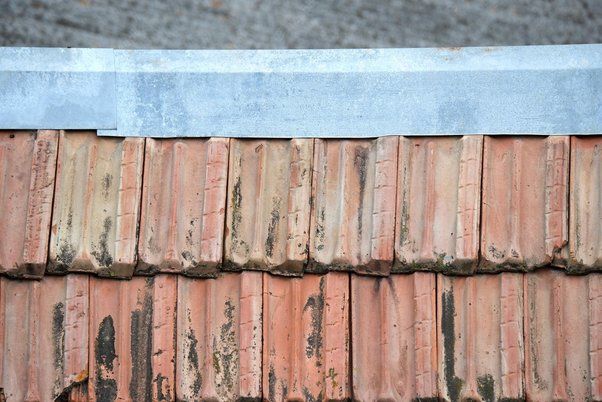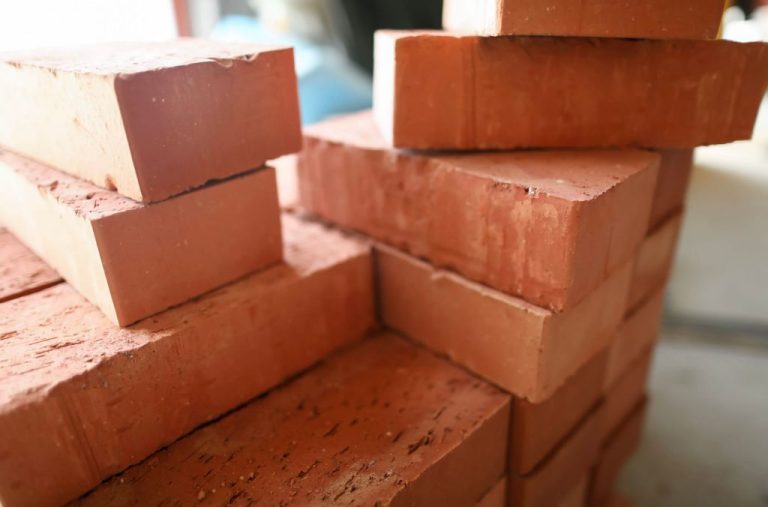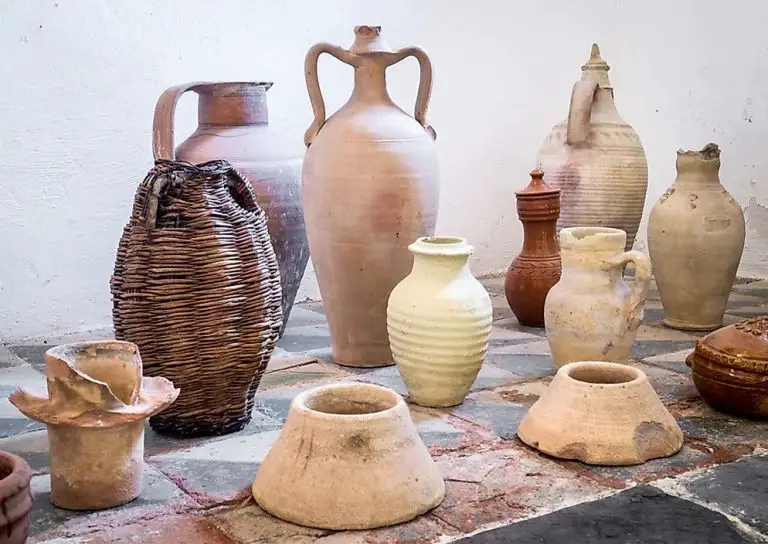What Is A Clay Tile?
A clay tile is a type of roofing material made from fired clay. Clay tiles have a long history of use for roofing dating back thousands of years to ancient China and Rome. Unlike other roofing like wood shingles or thatch, clay tiles are very durable, fireproof, and waterproof. This makes them an excellent roofing choice able to withstand the elements for many decades. Clay roof tiles continue to be a popular roofing material today thanks to their aesthetic appeal and functionality.
The earliest known use of clay tiles for roofing was in China around 10,000 BC. From China, clay roof tiles spread to other parts of Asia and eventually made their way to ancient Rome. Romans widely adopted clay tiles which they called “tegulae.” Clay tiles were a marked improvement over materials like thatch and wood shingles used prior. The mass production of clay tiles enabled their widespread use in Europe and parts of North Africa during Roman times. Clay remained a roofing staple through the Middle Ages. Today, clay tiles are manufactured globally but remain especially popular for residential architecture in Europe.
Clay tiles lend themselves well aesthetically to traditional and historic architecture styles. Their durability and protective abilities also make them a functional and long-lasting roofing choice. Clay tiles continue to roof houses across the world thanks to their rich history and proven effectiveness against the elements.
Composition
Clay tiles are primarily composed of clay, which comes from clay deposits found in various locations around the world. The specific composition depends on the type and source of the clay used. Clay is an abundant, naturally occurring material composed primarily of fine-grained minerals such as kaolinite, illite, and montmorillonite.
According to CEDUR, clay roof tiles start with natural clay that has different desirable properties. The clay is then mixed with water and molded into the shape of tiles. The tiles are fired at high temperatures, which causes the clay particles to bond together through a process called sintering. Firing clay at higher temperatures makes the tiles denser and more durable.

The manufacturing process transforms the soft clay into a hard, durable tile that can withstand the elements. The clay’s chemical composition and the firing process determine the tile’s color, strength, porosity, and other properties.
Types
Clay tiles come in various types, each with unique characteristics and applications. Some common types of clay tiles include:
Roof Tiles
Clay roof tiles have been used to cover roofs for centuries. Some common types of clay roof tiles include:
- Pan tiles – Interlocking curved tiles that overlap. Very popular in Europe.
- Plain tiles – Flat, non-interlocking roof tiles. Durable and affordable.
- Pantiles – S-shaped interlocking tiles. Provide excellent weather protection.
- Roman tiles – Curved roof tiles inspired by ancient Roman architecture.
Clay roof tiles are known for their beauty, durability, and fire resistance. However, they tend to be heavier and more expensive than other roofing materials.1
Floor Tiles
Clay has been used in floor tile manufacturing for thousands of years. Some examples of clay floor tiles include:
- Terracotta tiles – Made from natural clay and known for their earthy red/orange colors.
- Quarry tiles – Durable, non-slip tiles commonly used in high-traffic areas.
- Cotto tiles – Flat terracotta tiles with slightly rounded edges, often handmade.
- Pavers – Interlocking clay bricks used for patios, walkways, and driveways.
Clay floor tiles stand up well to heavy foot traffic while adding visual interest. However, they can be prone to cracking and chipping if not properly installed.2
Wall Tiles
Clay wall tiles are an attractive and durable covering for interior and exterior walls. Some examples include:
- Subway tiles – Classic 3×6 inch glossy white wall tiles.
- Moroccan tiles – Intricate patterned tiles commonly found in Moroccan architecture.
- Mexican tiles – Colorful hand-painted Talavera tiles.
- Portuguese tiles – Blue and white azulejo tiles dating back to the 1500s.
Clay wall tiles add visual interest and character. Their hard-fired finish resists moisture, staining, and scrubbing. However, they can be labor-intensive to install.1
Decorative Tiles
In addition to roof, floor, and wall tiles, clay is used for many decorative tile applications including:
- Backsplashes
- Countertops
- Fireplace surrounds
- Accent tiles
- Mosaic tiles
Decorative clay tiles can add visual interest and personality wherever used. Handmade artisan tiles provide unique custom details.2
Manufacturing Process
Clay tiles are manufactured through a process that involves clay preparation, molding, drying, and firing. The clay used for clay tiles is prepared by mixing various types of natural clay with water to achieve the desired consistency and properties. The prepared clay mixture is then pressed into molds to form the clay tiles. The molded tiles are air-dried to remove excess moisture before being fired in a kiln at high temperatures ranging from 1000°C to 1100°C. The firing process hardens the tiles and sets their final color and shape.
During clay preparation, different types of clay are combined in specific proportions along with water and other additives. The clay mixture is kneaded to remove air bubbles and obtain uniform consistency before molding. The molded clay tiles are initially dried at room temperature to remove excess moisture. The dried tiles are then fired at high temperatures in a kiln. The firing process vitrifies the clay through sintering, making the tiles denser and more durable. The firing temperature and duration determines the final strength, porosity, color and size of the clay tiles.
The manufacturing process transforms raw clays into durable, weather-resistant roofing tiles through careful clay preparation, molding, drying and high-temperature firing. The characteristics of the final clay tile product depend on the clay composition, molding technique, and kiln firing parameters.
Advantages
Clay tiles offer several key advantages that make them a popular roofing material. According to All Points Tile, clay tiles are very durable and long-lasting. They can withstand harsh weather conditions and last over 100 years. Clay is also naturally fireproof and provides excellent protection against fires spreading through the roof, as noted by Boulder Roofing. The natural insulating properties of clay tiles make homes more energy efficient by reducing heat transfer. As a natural material, clay tiles are environmentally friendly and sustainable.
The aesthetic appeal of clay tiles is another major advantage. Their classic, distinctive look enhances the curb appeal and value of any home. The variety of shapes, textures, patterns, and colors available in clay tiles allows for beautiful, customized designs not easily achieved with other roofing materials. According to responses on Quora, clay’s natural beauty and Old World charm is a top reason many homeowners choose these tiles.
Disadvantages
One of the key disadvantages of clay tiles is their weight. Clay is a dense, heavy material, so clay tiles can be cumbersome to transport and install. According to Gryphon Roofing, clay tiles typically weigh between 600-1500 pounds per square, making them significantly heavier than other roofing materials like asphalt shingles or metal roofing. The weight of clay tiles requires a sturdy roof deck that can handle the load.
In addition to being heavy, clay tile is also quite brittle and fragile. Clay can crack or break relatively easily, so tiles must be handled with care during shipping and installation. Cracked or broken tiles cannot be used and have to be replaced, adding to material costs. The brittle nature of the clay also makes clay tile roofs more prone to damage from hail storms or falling debris.
The third key disadvantage of clay tiles is their high installation cost. Due to the need for a robust roof deck, specialized installation, and tile fragility, installing a clay tile roof costs significantly more in both labor and materials compared to other roofing types, according to Quora. In addition, repairs tend to be costly should any tiles become damaged. The high upfront and potential future costs make clay tile an expensive roofing option.
Installation
Proper installation of clay tiles is crucial to ensure the roof’s durability and weather resistance. The roof deck must be prepared by installing plywood or OSB sheathing over the rafters. Next, an underlayment such as roofing felt is laid over the sheathing to create a waterproof barrier.
Clay tiles are installed starting at the bottom edge of the roof. Each tile overlaps the tile below it. Tiles are nailed in place using copper, stainless steel or galvanized nails. The nail heads are covered by the overlapping tiles. It’s important to follow the correct nailing pattern specified by the manufacturer, as this ensures the tiles are properly secured.
According to this article, tiles should be installed with a minimum 3 inch headlap and 2 inch sidelap. The overlaps help prevent water intrusion. Proper spacing between tiles is also important to allow for ventilation and prevent cracking from thermal expansion.
Maintenance
Proper maintenance is crucial for ensuring a long-lasting clay tile roof. It is recommended to inspect the roof at least annually for any signs of damage, deterioration or leaks. Pay close attention around areas such as chimneys, skylights and roof penetrations as these are common areas for leaks to occur. Look for cracked, broken or loose tiles and have them replaced immediately to prevent further damage. Also inspect flashing and sealants around openings and edges to ensure they are still intact. Any areas where the sealant is cracked or pulling away should be resealed.
Over time, clay tiles can become covered in moss, algae or lichen buildup which retains moisture and can lead to rotting of the tiles. It’s important to have a professional wash and treat the roof every 2-3 years to remove this growth and prevent further damage. Only professionals should walk on a clay tile roof to avoid cracking so moss removal should be left to an experienced roofer. The tiles themselves are quite durable if properly maintained.
Sources:
https://www.kellyroofing.com/blog/an-inside-look-at-the-dos-donts-of-clay-tile-roof-maintenance
https://www.bitcrooftiles.com/6-costly-clay-tile-roof-maintenance-mistakes-how-to-avoid-them/
Cost
The cost of a clay tile roof can vary significantly depending on the type of tile, roof size, labor costs in your area, and other factors. However, on average, expect to pay $10-20 per square foot for clay tile roofing.
The material cost for clay tiles ranges from $5-15 per square foot. According to My Home Quote, Spanish or Mediterranean style clay barrel tiles cost $5-9 per square foot while flat clay tiles run $12-15 per square foot. The type of tile affects cost.
In addition to materials, labor costs account for 50% or more of the total clay tile roof installation cost. Labor runs $5-10 per square foot. Roof pitch, difficulty of access, removable of old roofing, and other factors influence labor time and cost.
A clay tile roof can last over 100 years with proper installation and maintenance. The longevity offsets the higher initial investment. Lifespans of 50-75 years are common. Compare this to asphalt shingles lasting 20-30 years.
Environmental Impact
Clay roof tiles are considered an environmentally sustainable roofing material for several reasons. As a natural material composed primarily of clay, clay tiles do not contain harmful chemicals or toxins (Environmental Impact). The clay used in tile manufacturing is typically sourced locally near production facilities, reducing transportation emissions.
While clay tile production does consume energy, modern manufacturing methods have improved efficiency and lowered emissions. The long lifespan of clay tiles, which can last over 100 years, offsets much of the initial production impacts (Minimizing environmental impacts with clay roofing). Once installed, clay tiles require very little maintenance and can be continually reused and recycled.
Overall, clay roof tiles are considered a green, sustainable building material compared to other roofing options. Their natural composition, durability, and recyclability make them an environmentally responsible choice (Clay Tiles, Roof Slate, and Environmental Sustainability).



